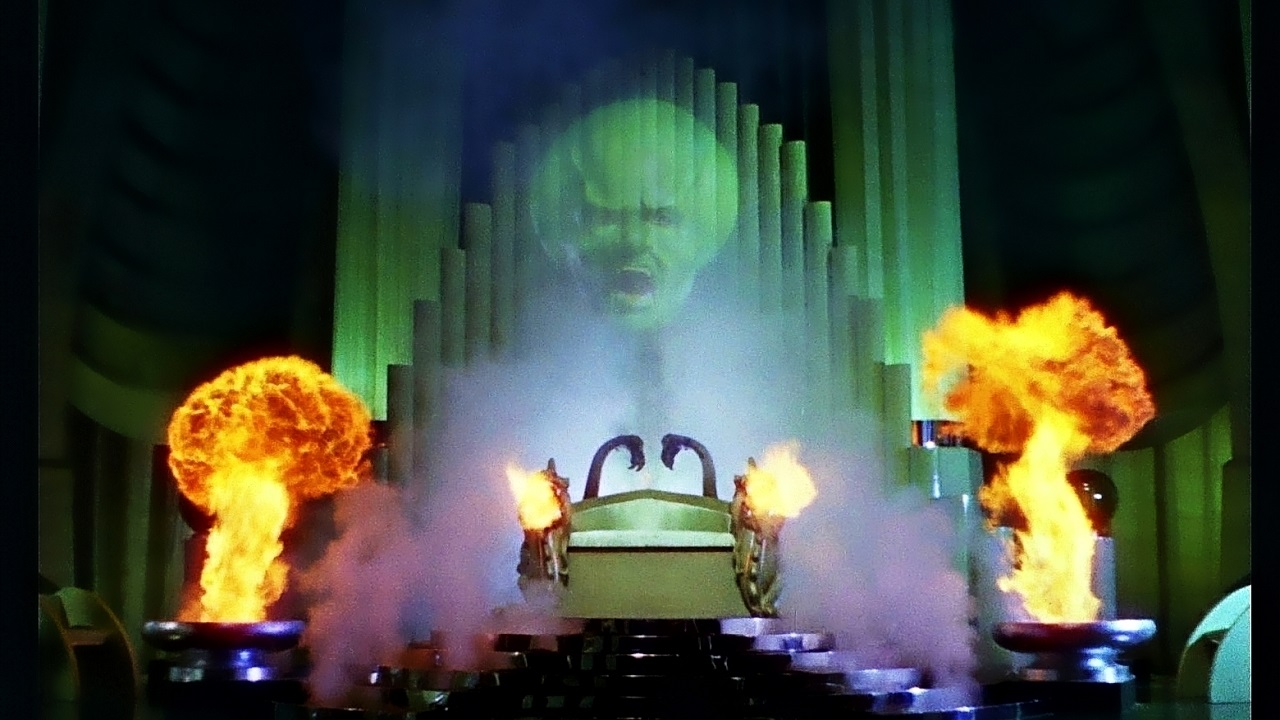PAY NO ATTENTION TO THAT MAN BEHIND THE CURTAIN! Like the great and powerful Oz pulling levers behind a green velvet curtain, social media algorithms run the show from the shadows. But is that a good thing or a bad thing?
Algorithms shape what we see, read, and engage with online. They influence everything from our news feeds to our Netflix suggestions. But as they quietly shape our digital reality, we have to ask: Are they friend or foe? Let’s break it down.
What even is an algorithm?
Think of an algorithm like a recipe—it’s a set of instructions computers follow to achieve a goal. Social media algorithms decide what pops up in your feed based on what you’ve interacted with before. They’re designed to keep you engaged, but that’s where things get tricky.
The Good: When algorithms work for you
Algorithms aren’t all bad. They make marketing smarter, helping brands target the right people without blowing huge ad budgets. Here’s how they actually help:
Personalization:
They serve up content tailored to your interests, so you’re not drowning in irrelevant posts.
Efficiency:
They streamline processes, saving time and effort for both users and businesses.
Exposure for Small Brands:
Even without deep pockets, smaller brands can get discovered by the right audience.
For marketers, this is gold. The ability to reach the exact people who will vibe with your brand is a game-changer. But as with all good things, there’s a flip side.

The Bad: The Echo Chamber Effect
While algorithms help us see what we like, they can also trap us in digital bubbles. By constantly feeding us similar content, they reinforce biases, limit perspectives, and fuel misinformation. Here’s how:
- Content Homogeneity: Platforms push content that’s already popular, stifling originality.
- Feedback Loops: Creators cater to algorithms instead of creativity, afraid to step outside their niche.
- Platform Dependency: Brands get hooked on specific platforms, making them vulnerable to algorithm updates.
- Audience Polarization: Content becomes more extreme to drive engagement, leading to digital echo chambers.
If it feels like you’re seeing the same voices, ideas, and trends over and over—it’s not in your head. It’s the algorithm at work.
The Ugly: Blame the algorithm? Not so fast.
It’s easy to curse “the algorithm” when things go south, but let’s be real: Algorithms don’t build themselves. They reflect the biases, priorities, and blind spots of the humans who create them. And that’s where things get messy.
Bias in algorithms can mean:
Demographic Bias
Algorithms often lean towards content from certain demographic groups, sidelining marginalized voices. This skews the visibility and success of diverse creators, making it harder for them to shine.
Content Type Bias
Algorithms can favor specific content types, like videos over text posts or short-form over long reads. This forces creators to adapt their strategies to fit the algorithm, sometimes at the expense of their unique style and audience needs.
Engagement Bias
High engagement content (likes, shares, comments) often gets prioritized, pushing sensational or clickbait content to the forefront. This can pressure creators to chase engagement metrics, potentially compromising quality and authenticity.
Feedback Loop Bias
Algorithms that recommend similar content based on past engagement can create echo chambers. This makes it tough for marketers and creators to reach new audiences, as their content keeps circulating within the same group.
Visibility Bias
New or smaller creators struggle to gain visibility due to algorithmic preferences for established accounts. This limits the diversity of content and makes it harder for emerging voices to break through.
Ad Bias
Advertising algorithms can show biases based on demographic data, leading to discriminatory practices. For instance, job ads might be shown predominantly to one gender or age group, affecting the fairness and reach of marketing campaigns.
Cultural Bias
Algorithms trained on data from specific regions or cultures may not effectively promote content from other areas. This can lead to a homogenized content landscape, making it challenging for marketers to engage with a global or culturally diverse audience.
These built-in biases shape who and what gets seen online. And that means we need to hold developers, tech companies, and policymakers accountable for making them fairer.
The symbolism of Frank Morgan playing multiple characters in “The Wizard of Oz” provides a thought-provoking lens to examine how we perceive social media algorithms and the individuals who design them.

Pull back the curtain: Who’s really in control?
Social media algorithms aren’t sentient beings making choices in a vacuum. Behind every line of code is a team of engineers, developers, and decision-makers who shape how these systems operate. The illusion of an autonomous algorithm making neutral decisions is just that—an illusion. When an algorithm amplifies misinformation, reinforces biases, or manipulates engagement in harmful ways, it’s not some rogue AI at fault; it’s the people who built, trained, and deployed it. Accountability doesn’t stop at “the algorithm did it.” The human hands behind the curtain are the ones pulling the levers, and they must be held responsible.
The Many Faces Behind the Curtain
Frank Morgan, the actor who played the Wizard of Oz, also appeared as Professor Marvel, The Gatekeeper, The Carriage Driver, and The Guard—each a different mask of control and illusion. This wasn’t just a clever casting choice; it was a thematic statement. The great and powerful Oz was never just one man but an interconnected system of gatekeeping and misdirection.
The same applies to social media algorithms. They may seem like monolithic forces, but behind them is an entire ecosystem of tech leaders, engineers, policy-makers, and investors—each with their own interests, biases, and levels of influence. They operate behind the digital curtain, shaping our online experiences in ways most users never realize. This hidden control forces us to question: Who decides what we see? Who benefits from our engagement? And who gets left out of the conversation entirely?
The Digital Emerald City: A Construct of Power
Like the gleaming Emerald City, the digital landscape is built on spectacle and controlled perception. Social media algorithms dictate visibility, determining which voices rise to prominence and which get buried. They can manufacture virality, dictate public discourse, and even shape cultural trends—all while those designing them remain comfortably in the shadows. The unsettling part? Most users never think to question who’s pulling the strings.
The multiple roles Frank Morgan played in The Wizard of Oz serve as a perfect metaphor for this hidden power dynamic. The same figures who build these platforms also guard the gates, set the rules, and decide who gets to enter the spotlight. The illusion of neutrality is just that—an illusion.
A Horse of a Different Color: Redefining Digital Accountability
The Wizard’s arc wasn’t just about deception; it was about self-discovery and the pursuit of authenticity. And that’s where the real lesson lies. The digital world doesn’t have to be an opaque, algorithm-driven spectacle. By demanding transparency, questioning what we’re fed, and advocating for ethical design, we can start pulling back the curtain.
Algorithms aren’t inherently bad, but unchecked power always is. It’s time to stop treating these systems as untouchable forces of nature and start holding their creators accountable. Because at the end of the day, the most dangerous illusion isn’t the algorithm itself—it’s the belief that we have no control over it.
So, what’s the next move?
The reality is, social media algorithms aren’t inherently evil—they’re tools. It’s up to us to use them wisely. Here’s how:
- Diversify Your Feed: Follow a mix of voices, industries, and viewpoints.
- Think Before You Click: Engagement fuels the algorithm—don’t give attention to low-quality content.
- Advocate for Transparency: Tech companies need to be more upfront about how algorithms work.
- Create for People, Not Just Algorithms: Marketers and content creators should prioritize authenticity over chasing trends.
Follow the yellow brick road, face your fears, make some friends along the way and change Oz for the greater good.
Just like Frank Morgan played multiple characters in The Wizard of Oz, tech giants wear many hats—innovators, gatekeepers, and sometimes, illusionists. The more we understand how these digital wizards operate, the more we can take back control of our online experience.
At Verve Creative Studio, we see social media marketing as a collaboration, not an extractive process. We work alongside brands to create thoughtful, strategic content that stands out—algorithm or not.
Want to build a marketing strategy that doesn’t rely on gaming the system? Let’s chat.









